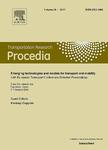版权所有:内蒙古大学图书馆 技术提供:维普资讯• 智图
内蒙古自治区呼和浩特市赛罕区大学西街235号 邮编: 010021

作者机构:PhD Student Department of Civil Engineering Indian Institute of Science (IISc) Bangalore India PhD Student Robert Bosch Centre for Cyber-Physical Systems (RBCCPS) Indian Institute of Science (IISc) Bangalore India Professor Department of Civil Engineering Indian Institute of Science (IISc) Bangalore India
出 版 物:《Transportation Research Procedia》
年 卷 期:2025年第82卷
页 面:923-937页
主 题:Aircraft Landing Problem (ALP) First Come First Serve (FCFS) Mixed Integer Programming (MIP) Air Traffic Management (ATM)
摘 要:Managing aircraft landings in the Terminal Area (TMA) is a key challenge in Air Traffic Management (ATM) and has been gaining attention due to the consistent growth of air traffic congestion and delays. The Aircraft Landing Problem (ALP) deals with this issue by optimally scheduling the aircraft landings in the TMA so that the overall delay is minimized. Most modern models and solution methods addressing ALP allow aircraft re-positioning. However, majority of the airports still employ the First Come First Serve (FCFS) policy to manage landings. This study seeks to assess the optimality of the FCFS policy. Mixed Integer Programming (MIP) models are proposed to replicate FCFS, and the solutions are compared with the results from a state-of-the-art (SOA) model. Results suggest that FCFS results in 1.76 times more deviation from the target landing time than the SOA outcome on a single runway. While, in case of multiple runways, FCFS results are comparable with the SOA model outcomes. Findings also suggest that different holding times may result in different runway combinations. Implications of this study can help ATM decision-makers estimate the overall delay/deviation arising from FCFS and efficiently plan the available resource, workforce, and infrastructure augmentation decisions under FCFS policy.